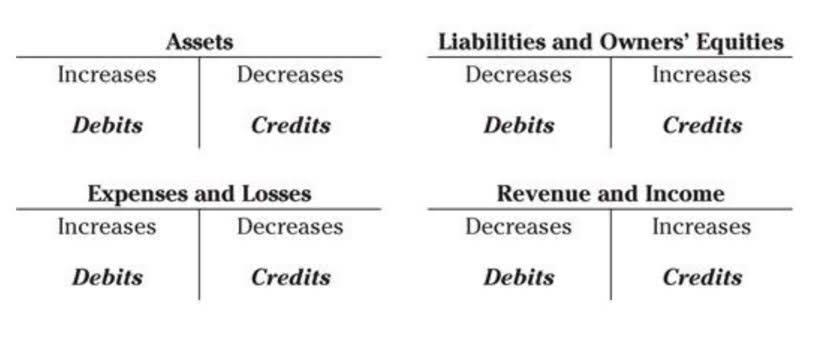
Having months of cash on hand is important, but having unrestricted cash available is essential because it allows an organization to meet its monthly obligations such as rent, payroll and utilities. Nonprofits should include disclosures regarding the liquidity and availability of resources. The purpose of the disclosures is to communicate whether the organization’s liquid available resources are sufficient to meet the cash needs for general expenditures for one year beyond the balance sheet date.

What is an Income and Expenditure Account? (Explained)
- Therefore, unrestricted net assets play a vital role in ensuring that an organization can effectively meet its goals and obligations.
- The management and reporting of unrestricted net assets carry significant implications for various stakeholders within a nonprofit organization.
- Perhaps the donation is to be used on a specific project or to pay for a specific need the non-profit has.
- Salaries, benefits, professional services, office expenses, information technology and insurance, are allocated based on estimates of time and effort.
- Net assets were formerly presented as unrestricted, temporarily restricted, or permanently restricted.
- The number of accounts depends on the number of programs that the nonprofit has, the types of revenues it earns, and the level of detail required for planning and control of the organization.
- The statement of activities, similar to an income statement, outlines the organization’s revenues and expenses over a reporting period.
Another critical element is the Statement of Cash Flows, which details the cash inflows and outflows from operating, investing, and financing activities. This statement helps https://www.bookstime.com/articles/what-is-a-retainer-fee-and-how-it-works stakeholders understand the liquidity and financial flexibility of the organization. This dual categorization provides insights into how efficiently the organization is using its resources to achieve its mission. The reclassification process involves making precise journal entries that reflect the change in the nature of the funds.

Temporarily restricted net assets
- Another benefit of having unrestricted net assets is that it can help to improve a company’s credit rating.
- For instance, if a nonprofit has three main programs, then each of the three programs will be listed along with each program’s expenses.
- This recognition is crucial as it triggers the reclassification of these funds from temporarily restricted to unrestricted net assets.
- It also helps in identifying trends in cash flow, which can inform future financial planning and decision-making.
- NFP A has a policy to structure its financial assets to be available as its general expenditures, liabilities, and other obligations come due.
The differences may seem like petty semantics, but each is based in a logical purpose. The non-profit doesn’t have owners, for example, making shareholder equity an inapplicable label. Net assets is more descriptive, implying that the number represents the net difference between the non-profit’s assets and its liabilities. AVAILABLE NOW – Great Beginnings for New Nonprofits, a free 8-part email unrestricted net assets course on fundraising, financial management and other “must know” topics. In this example, net assets of $100,000 obviously does not represent cash you can spend. For example, an organization devoted to animal rescue may receive a restricted donation to be spent on the care and feeding of crocodiles.

Unrestricted Net Assets
If a small or midsize nonprofit does have an endowment, the donor often requires that the income generated from the gift be used for operations or for a specific purpose. While a separate cash or investment account does not need to be established, the accounting records should include a calculation and entries to showing how this restriction has been met. Reclassification of net assets is a process that nonprofits must navigate carefully to ensure compliance with accounting standards and donor intentions.
Incorrect or delayed entries can lead to financial discrepancies, complicating audits and potentially undermining donor trust. Nonprofits often use specialized accounting software, such as QuickBooks Nonprofit or Blackbaud Financial Edge, to streamline this process. These tools offer features tailored to the unique needs of nonprofit accounting, including automated journal entries and real-time financial reporting. By leveraging such software, organizations can ensure that their financial records are both accurate and up-to-date, facilitating better decision-making and compliance with accounting standards. Nonprofits play a crucial role in addressing societal needs, often relying on various forms of funding to sustain their operations.
- In other cases, unspent restricted funds may need to be returned to the grant maker or donor.
- I don’t understand why we can’t pay the bills,” exclaimed Todd, a member of the board of directors, as he looked at the balance sheet.
- Net assets is more descriptive, implying that the number represents the net difference between the non-profit’s assets and its liabilities.
- Unrestricted net assets are financial resources that can be used by an organization at any time, without restrictions.
- This statement provides a snapshot of the organization’s assets, liabilities, and net assets at a specific point in time.
- Specifically, there are the unrestricted net assets and two types of restricted net assets.
- When staff see that the organization is committed to their well-being and professional growth, it can lead to higher morale, increased retention, and a more motivated workforce.
The FASB requires that you set up at least 2 different “funds” within your accounts– one to track assets with donor-imposed restrictions, and one to track assets without donor-imposed restrictions. In many cases, though, you’re going to want to have more funds in order to optimize accuracy and transparency in your finances. Think of each fund as a mini organization within your company, each with its own budget and financial statements that track revenue, expenses, liabilities, assets, and equity (net assets). Learn how nonprofits manage net assets released from restrictions, impacting financial statements and ensuring compliance. Net assets with donor restrictions – The part of net assets of a not-for-profit entity that is subject to donor-imposed restrictions (donors include other types of contributors, including makers of certain grants).

- Nonprofits play a crucial role in addressing societal needs, often relying on various forms of funding to sustain their operations.
- When funds are reclassified, they are typically reported as revenue in the unrestricted net assets section.
- Unlike restricted funds, unrestricted net assets offer the freedom to adapt to changing circumstances.
- In addition to financial planning, fostering a culture of transparency and accountability within the organization is vital.
This category of net assets is less flexible but provides a stable financial foundation for the organization. Donors may specify that their contributions be used within a certain period, such as a fiscal year or a multi-year grant cycle. As the designated time frame elapses, the restrictions are lifted, and the funds can be reallocated. This type of release is particularly beneficial for long-term planning, as it provides a predictable timeline for when additional resources will become available. It also allows nonprofits to align their financial strategies with donor expectations, ensuring that funds are utilized in a timely and effective manner.
Comprehensive Guide to Loan Accounting Principles and Practices

The detail in the general ledger accounts will always be available for management’s use. However, the account balances will be combined into a few amounts that are presented in the financial statements and IRS Form 990. In order to accurately report the amount in each of these subgroups, it may be necessary to allocate https://www.instagram.com/bookstime_inc some management and general salaries to fundraising based on the time spent by employees performing fundraising activities.
